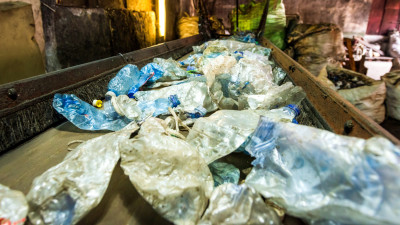Following the adoption of the European Commission’s Circular Economy Package and the announcement of a €24B fund to support circular economy projects and businesses, several organizations have released research reports and tools to aid the transition.
EU Remanufacturing Could Represent Up to €90B Annually, 600,000 Jobs by 2030
Following the adoption of the European Commission’s Circular Economy Package and the announcement of a €24B fund to support circular economy projects and businesses, several organizations have released research reports and tools to aid the transition. One such report revealed that returning a product to at least its original performance with a warranty that is equivalent or better than that of the newly manufactured product – known as remanufacturing – has untapped economic, employment, and environmental potential in the European Union (EU).
The European Remanufacturing Network (ERN) conducted research to determine the current level of remanufacturing in EU countries and provide an outlook on the future of remanufacturing in the EU. The ERN’s Remanufacturing Market Study covered 9 sectors: aerospace; automotive; electrical and electronic equipment (EEE); furniture; heavy-duty and off-road equipment (HDOR); machinery; marine; medical equipment; and rail. Four key regions were estimated to account for about 70 percent of remanufacturing in Europe: Germany; the United Kingdom (UK) and Ireland; France; and Italy. Germany alone undertakes about a third of European manufacturing, with strong positions in the aerospace, automotive and HDOR sectors.
According to the ERN report, remanufacturing currently generates an estimated €30 billion annually and employs around 190,000 people across the sectors studied. Yet, the current ratio of remanufacturing to new manufacturing is estimated at just 1.9 percent, suggesting substantial room for growth and improvement.
Remanufacturers identified benefits such as securing parts supply, lower product prices, enabling alternative business models, customer pressure, asset protection, and reduced lead times. The top motives for remanufacturers were identified as:
- Higher profit margins;
- Environmental responsibility;
- Strategic advantage; and
- Increasing market share.
However, the top barriers were identified as:
- Customer recognition;
- Volume or availability of ‘core’ (a used part intended to become a remanufactured product);
- Quality of core; and
- High labor costs.
Other barriers included legal ambiguity over remanufacturing in different jurisdictions, lack of sales channels, lack of product knowledge including third party product technical information, lack of technology, low cost new product competition, skills shortages, poor design for remanufacturing, rapid evolution of technology base, and lack of remediation techniques. The Ellen MacArthur Foundation (EMF), an organization leading the circular economy movement, released a toolkit for policymakers last year that explored some of these barriers and offered potential actions, such as the application of fiscal frameworks that stimulate activities such as remanufacturing.
Despite these barriers, and with the support of policies such as the aforementioned European Commission fund, the ERN expects that “by 2030 EU remanufacturing could attain an annual value of €70 [billion] and €90 [billion] with the associated employment of [approximately] 450,000 and almost 600,000 respectively.”
Interesting, the research also suggests that there is a gap: policymakers see a significant opportunity in remanufacturing in securing raw materials supply, while companies and registered trade organizations did not seem to see as much opportunity for remanufacturing. The surveys and interviews were conducted before the release of the EU Circular Economy Package, so it is possible that with efforts from policymakers, the fund to help businesses transition, and increased communication around the potential for remanufacturing – especially that which highlights the business case and provides examples – that more businesses will get on board.








